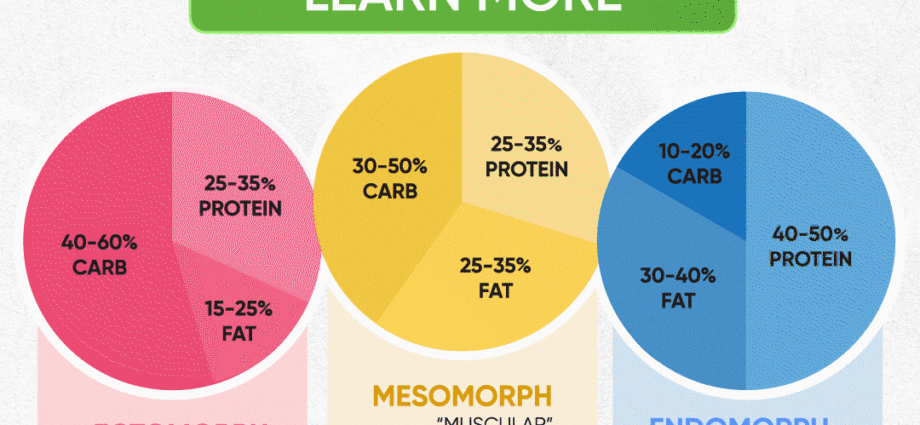Contents
- How to calculate your baseline calorie expenditure
- Calculating the Basal Metabolic Rate (BMR)
- Calculating baseline calorie expenditure using the Harris-Benedict formula
- Calculating baseline calorie expenditure using the Mifflin-Geor formula
- Calculating baseline calorie expenditure using the Catch-McArdle formula
- Why you can not increase consumption through diet
- Calorie Calorie Calculation
- Rules for using base and additional expense
How to calculate your baseline calorie expenditure
It’s no secret that to lose weight, you need to burn calories higher than your intake. If the intake of calories depends only on the consumption of food and drinks, then the consumption is divided into base and additional. Basic calorie expenditure is the expenditure of energy for maintaining life, and the additional one is the amount of energy that we spend on training and any other physical activity. To avoid confusion in these concepts, let’s look at them in more detail.
Calculating the Basal Metabolic Rate (BMR)
The body spends much more calories on maintaining vital functions than on training activity. We do not notice this, but our body spends energy on breathing, metabolism of proteins, carbohydrates and fats, cognitive functions and support of the nervous system, heartbeat and the work of other internal organs, on maintaining hormonal levels, on sleep, on movement, and even on food. … The work of the body does not stop for a minute.
Calorie consumption baseline shows your metabolic status. It can be calculated using the following equations: Harris-Benedict, Mifflin-Geor, Katch-McArdle.
Calculating baseline calorie expenditure using the Harris-Benedict formula
This is the most popular and simplest formula for calculating calorie expenditure per day. To do this, you need to indicate height, weight and age. In 1984, it was revised to reflect the updated medical requirements.
The current version of the equation:
Men: BMR = 88.362 + (13.397 × weight in kg) + (4.799 × height in cm) – (5.677 × age)
Women: BMR = 447.593 + (9.247 × weight in kg) + (3.098 × height in cm) – (4.330 × age)
Calculating baseline calorie expenditure using the Mifflin-Geor formula
This formula was born in 1990. It is considered one of the most accurate. To calculate, you also need to know weight, height and age.
Men: BMR = (10 × weight in kg) + (6,25 × height in cm) – (5 × age) + 5
Women: BMR = (10 × weight in kg) + (6,25 × height in cm) – (5 × age) – 161
Calculating baseline calorie expenditure using the Catch-McArdle formula
It is considered the most accurate, but it is calculated on the basis of lean body mass excluding fat, and for this you need to know your percentage of fat.
Lean Body Mass (LBM) Calculation:
LBM = [weight (kg) × (100 -% fat)] / 100
Calculating your baseline calorie expenditure (BMR):
BMR = 370 + (21.6 × LBM)
Baseline calorie expenditure is related to both fat and muscle mass. The more muscle you have, the more energy your body expends at rest.
Why you can not increase consumption through diet
The calorie deficit should never fall below the baseline consumption. Otherwise, the body will begin to save energy due to hormonal levels. First, it will lower the level of leptin (saturation hormone), then thyroid and reproductive hormones. You should always have available energy to support the endocrine, nervous and other systems. A healthy diet, adequate deficiency and a long-term weight loss attitude will help to avoid hormonal imbalances.
Calorie Calorie Calculation
Supplemental energy expenditure is divided into calories spent in training and calories spent in non-training activities.
In training, we expend relatively few calories – an average of 400 calories per hour of intense exercise. With three workouts a week, that only gives us 1200 calories. However, if training is aimed at strengthening muscle tissue, then the baseline energy expenditure will increase. The body spends more calories building and maintaining muscle than storing and retaining fat.
Non-training activity (NEAT) means any spontaneous or routine physical activity: walking, shopping, cleaning, cooking, playing with the child, and even working at the computer.
You can calculate the additional expenditure of energy in the Calorie Consumption Analyzer. You just need to indicate your weight, choose the type of activity and indicate the time in minutes. The system will calculate everything for you.
Rules for using base and additional expense
Knowing How long energy is expended allows you to correctly calculate the calorie deficit for weight loss, but it is difficult to predict the exact weight loss.
Difficulties can arise due to:
- Errors in calculating calories consumed;
- Erroneous assessment of your own activity;
- Fluid retention in the body;
- Retention of fluid in the female body in certain phases of the cycle;
- Simultaneous muscle growth and fat burning;
- Failure to slow down baseline calorie expenditure.
To avoid the above difficulties, eat properly within the calorie and BJU corridor, soberly assess your own non-training activity, trying to maintain it at approximately the same level every day, exercise regularly, weigh yourself and measure volumes at the same time, and also take into account the phase of the menstrual cycle.










